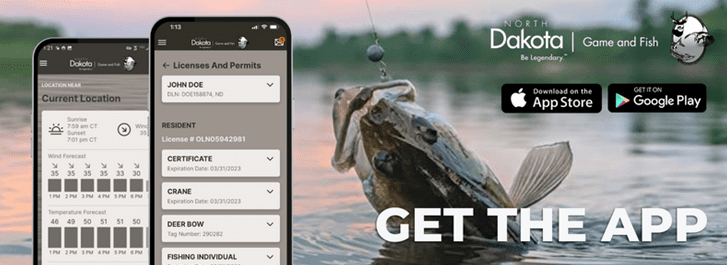

Say Yes to Clean, Drain, Dry
While the effort to stop the introduction and transportation of aquatic nuisance species in North Dakota has been mostly successful, challenges remain as not all anglers, pleasure boaters and other water enthusiasts are abiding by the clean, drain, dry message.
For example, last week department game wardens and other department staff inspected over 1,200 watercrafts throughout the state. Unfortunately, these inspections found four watercraft that were transporting zebra mussels. Luckily, in all four incidences, the zebra mussels were determined to be dead.
North Dakota waters remain relatively free of aquatic nuisance species. Besides common carp, most species – zebra mussels, Eurasian water milfoil, flowering rush, curly-leaf pondweed and three species of invasive carp – are only found in a handful of waters in the state.
To keep our waters clean of aquatic nuisance species, the Game and Fish Department reminds all anglers, pleasure boaters and water users to clean, drain and dry all equipment after every use.
Clean and remove all plants and animals from watercraft or equipment prior to leaving any recreational area.
Drain all water from watercraft and equipment before leaving designated access points. Not draining water can be extremely hazardous and may cause negligent transportation of aquatic nuisance species to other locations.
Dry all equipment completely before using again.
For more information on aquatic nuisance species, visit the department’s website at gf.nd.gov.
Anglers Should Keep Fish Caught in Deep Water
North Dakota Game and Fish Department fisheries personnel encourage anglers to keep fish caught from depths of more than 25 feet, rather than practice catch-and-release.
Scott Gangl, Game and Fish fisheries management section leader, said with the exceptional fish bite at Lake Sakakawea this summer, anglers should know fish reeled in from this depth will likely die if released.
“As water warms during summer, fish tend to move to deeper, cooler water,” Gangl said. “This is particularly true for walleye in the big lake, where they follow their primary forage of rainbow smelt to deeper depths as summer progresses. Now fish are being caught at depths where barotrauma is a concern.”
Change in water pressure will cause the swim bladder to expand, Gangl said, which means fish can no longer control balance. In addition, he said other internal injuries are likely, such as ruptured blood vessels or damaged internal organs. Because of these other internal injuries, biologists discourage fizzing, the practice of deflating the swim bladder.
Barotrauma can happen in any deep water body such as Devils Lake, Lake Oahe and Lake Sakakawea, Gangl said, but it is especially noteworthy for this time of year in the big lake.
Prior to fishing at least 25 feet deep, anglers should make the decision to keep what they catch.
Guide and Outfitter Exam Scheduled
The next guide and outfitter written examination is Aug. 19 at 1 p.m. at the North Dakota Game and Fish Department office in Bismarck. Preregistration is required no later than Aug. 11 by calling the Department’s enforcement office at 701-328-6604. The test is given periodically to anyone interested in becoming a guide or outfitter in the state.